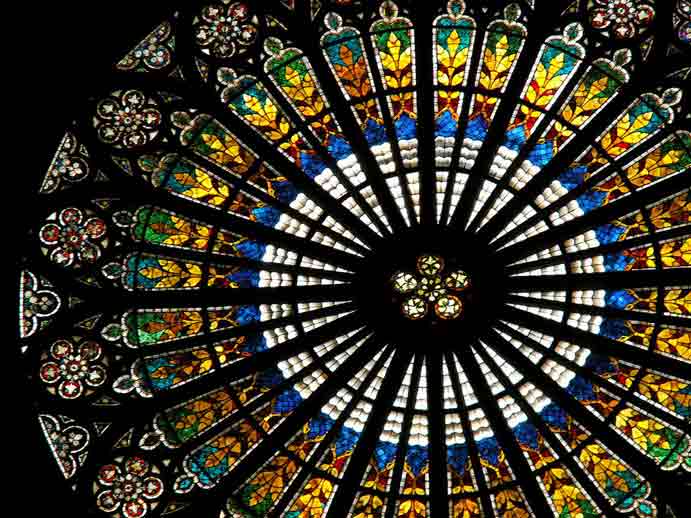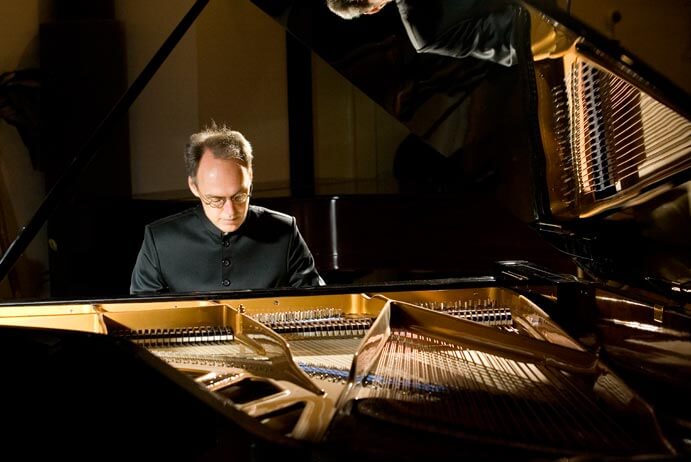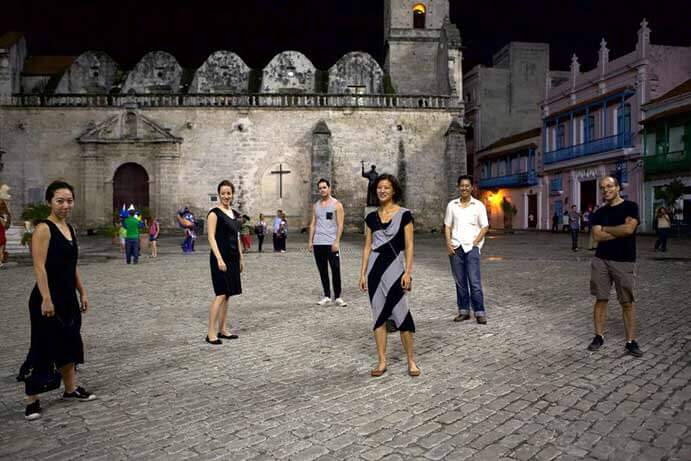When American Composers Forum was invited by festival director Guido López-Gavilán to bring an artists delegation to the 28th Havana Contemporary Music Festival, it coalesced perfectly with ACF board vice-chair Patrick Castillo’s recent efforts to form a new performing ensemble with his wife, violinist Karen Kim. “We wanted to assemble a group of musicians whom we could trust with the broad sweep of chamber repertoire,” Castillo reports, “to take everything from Mozart to Schoenberg to stuff with the ink still wet equally seriously, with total curiosity, and absolutely kill it, no matter what the program.” Highly-regarded chamber players Sooyun Kim (flute), Romie de Guise-Langlois (clarinet), Michael Nicolas (cello), and Orion Weiss (piano) signed on and Third Sound was born. They made their concert debut on November 17, 2015, in the 16th Century Basilica of St. Francis of Asisi in Old Havana, Cuba. Their program featured works by their ACF artists delegation colleagues, ten American composers chosen from over 400 submissions to the ACF call for scores, with all ten in attendance, the first time such a concert has been presented in Cuba since at least the 1959 revolution.
Three pieces on the program were scored for the full ensemble. “Microconcerto [in Memoriam György Ligeti]” from Kati Agócs’ 2007 work Immutable Dreams, is a highly concentrated piano concerto. Gauzy wisps of sound from Karen Kim and Nicolas set the promised dream-state at the start, giving way to an all-in crescendo. Lyrical lines set akimbo in each “orchestra section” led to a rhapsodic solo piano cadenza which Weiss attacked with passion and precision. The ensemble returned in a furious descending passage that resolved in a return to the offset lyrical lines, a tribute in sound to Agócs’ Hungarian heritage and the inspiration of Ligeti, who passed away during the composition of this work.

The Strasbourg Rosace (photo: Boulanger.IE)
Spencer Topel’s Details on the Strasbourg Rosace (2011, version for Cuba) is a sonification of numerous design details in the stained glass window at the Notre Dame Cathedral in Strasbourg, France, named in the title. The piece models these visual design elements both in musical notes and in several forms of electronic noise overlays from transducers placed on the piano’s soundboard and vocalizations from the performers, with Topel at a computerized control panel. Breathy whooshing sounds from long, deep exhalations mixed with sounds of hissing steam and pouring gravel. Sooyun Kim and de Guise-Langlois blew long, high pitches as Nicolas and Karen Kim too scratched out notes in their topmost registers. The music built in tension and then dropped to near silence, as if fading into oblivion, reflecting “the relationship between darkness–represented as pitchless noise features–at one end, and white full-spectrum light at the other,” per Topel’s program notes in the score.
Third Sound brilliantly chose Jennifer Hidgon’s Smash to conclude the program. A Pierrot quintet reworking of DASH (a trio piece Higdon has set for four different instrumentations), this rousing short piece–less than five minutes–packs a potent punch so fitting for a closing number. Smash starts off fast and furious with the full ensemble and never lets up, a five-person team race to who knows where. We speculated it could be called MAD DASH, and with five parts, be a soundtrack to an animated cartoon of the the same name, featuring Chico, Harpo, Groucho, Gummo, and Zeppo Marx.
The balance of the program featured pieces scored for various subsets of the ensemble. Kai-Young Chan’s Mieko (2014) for solo flute and electronics was inspired by Fumiko Enchi’s novel Masks. Sooyun Kim, with a bold and defiant physicality, issued mysterious bursts of notes in a groaning and pounding electronic soundscape. A Crowd of Twisted Things (2011), Christopher Jones’ duet for violin and piano, takes its name from a line in T.S. Eliot’s Rhapsody on a Windy Night. A slippery rumination on memory, Karen Kim’s violin skittered about over insistent bass figures from Weiss’ piano.
Cindy Cox, Amadeus Regucera, and Jeremy Gill offered works for trios. Cox’s Wave (2009, first movement) for piano, violin, and cello, sets three angular crossing lines that merge in and out of a fugue-like structure exploring harmonic variations. Inexpressible (2013), from Regucera, featured flute, violin, and cello. Aptly named, it was fast, exciting, and delightfully inscrutable. Moments of dense sound and wild gestures were pitted against sudden stops into silence, requiring a level of precision that called for Castillo to serve as conductor. Gill’s “Paean, Epitaph and Dithyramb” from Ode (2008), scored for flute, cello and piano, is an elegiac rumination on mortality. A mournful line in the cello over a piano drone welcomed a soaring flute that led the trio into a flight of ecstasy.

Composer Michael Harrison (photo: UPStudio)
Works by Michael Harrison and Ingrid Arauco were scored for differing quartets. Harrison’s Radians Phase II (2015), a world premiere, features flute, clarinet, violin, cello, plus fixed electronics. Built of long, slow notes over ambient sounds, it created a mesmerizing meditative soundspace and a palpable sense of expectation. It seemed to employ the structural methods of minimalism, but without its characteristic sound. In her Fantasy Quartet (2001), Arauco calls for clarinet, violin, cello and piano. The piano made a dramatic entrance over a melodic line introduced by Karen Kim’s violin and de Guise-Langlois’ clarinet. A virtuosic conversation ensued among the instruments with interspersed soliloquies, ending with a dramatic single note plucked by Nicolas on the cello.
At the pivot point of the program, Third Sound added a tribute to composer and ACF founder Libby Larsen. de Guise-Langlois played a movement from Dancing solo (1994), an athletic tour-de-force for clarinet that seemed to call upon every facet of the instrument in a mere six minutes. Throughout this historic concert, Third Sound played with a level of commitment, joy, and ensemble cohesion that belies the short time they have worked together. The Cuban composers and musicians in attendance were duly enthralled with both the compositions and the performances, which bodes well for future collaborative ventures.
Upcoming:
Third Sound will revisit much of the repertoire from this concert, plus several works by Cuban composers, on the Great Music at St. Bart’s series in New York City on Tuesday January 12, 2016 at 7:30 PM.





















